Rioters carried many familiar flags during the January 6th insurrection at the United States Capitol — Confederate, MAGA, as well as some custom-made ones like a flag of Trump looking like Rambo. Except for onlookers who were already familiar with the design, it would have been easy to overlook one particular bright yellow flag with three red horizontal stripes across the center. This was the flag of South Vietnam.
There were actually several confounding international flags present at the Capitol riot that day: the Canadian, Indian, South Korean flags, all were spotted somewhere in the mayhem. But what was peculiar about the Vietnamese flag being there was that it’s not technically the flag of Vietnam but the Republic of Vietnam, a country that no longer exists. And what this flag stands for (or should stand for) remains a really contentious issue for the Vietnamese American community.
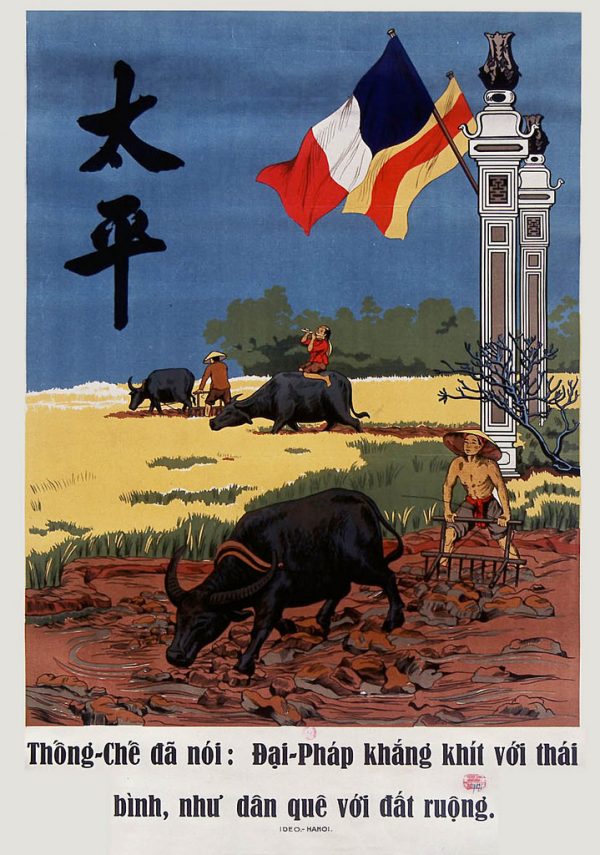
The Republic of Vietnam, or more commonly known as South Vietnam, was formed in part as a reaction to colonialism. Because the country has spent over a thousand years being ruled by outside forces. Vietnam spent much of its early history ruled by China, and then in the mid-1800s, Vietnam came under the control of France. For decades France exploited Vietnam’s natural resources and suppressed Vietnamese identity, going so far as to ban the word “Vietnam” from the region because it was associated with self-determination.
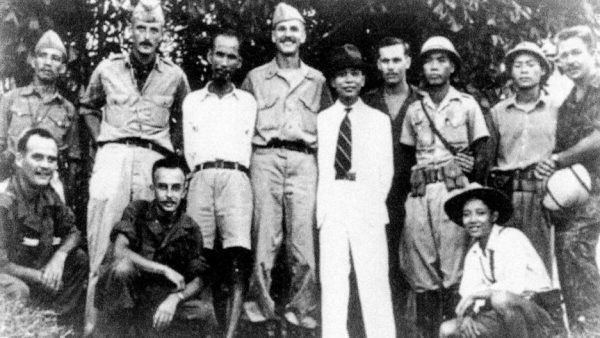
Within Vietnam, there were those who were against colonialism but still wanted to stay closely aligned with the United States. But there were leaders like Ho Chi Minh in the North, who believed that there would never be a path toward prosperity under any form of imperialism. Rather, Vietnam needed to be a completely independent, communist state. Ho Chi Minh and his army, the Viet Minh defeated the French in 1954 which rattled the Western world. Countries like the US were concerned that communism would continue spreading throughout Southeast Asia.
During the 1954 Geneva conference, it was decided that France would withdraw from Northern Vietnam. It was also decided that until free elections could be held, the country would be split in two. So Vietnam was partitioned at the 17th parallel, with a communist country in the north. The south, meanwhile, is nominally democratic, albeit with a lot of US influence. Each side had separate ideologies, territories, and flags.
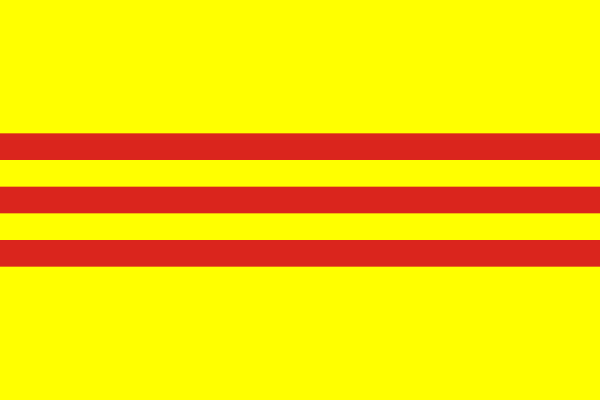
The flag of South Vietnam was a yellow field with three thin red stripes running horizontally across the center. The yellow symbolized the people and the three stripes represent the three distinct regions of the country: North, Central, and South Vietnam unified under one banner. In the North, leadership wanted the same thing: a unified Vietnam under those same two colors. But theirs was a different flag. A red field with a bright yellow star at the center — the five points of the star were to represent peasants, workers, intellectuals, traders, and soldiers, united in their effort to build a socialist future.
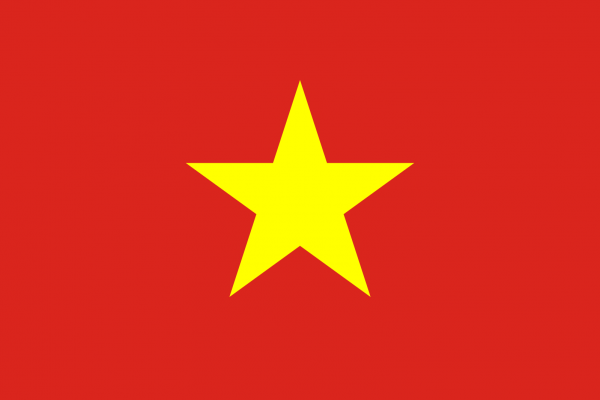
These two Vietnams clashed in a civil war that lasted for two decades. The US wanted South Vietnam to be its anti-communist stronghold in Southeast Asia, but as the war dragged on, it became clearer and clearer that a democratic Vietnam was not possible. Ultimately, the North prevailed. After the fall of Saigon, the north and south once again became one nation. The new government of the Socialist Republic of Vietnam immediately went to task undoing years of capitalist influence on the southern half of the country with grim efficiency.
Many Vietnamese fled the south entirely, and when the first wave of southern Vietnamese refugees resettled in other parts of the world in the late 70s and early 80s, their music, history, culture, and other symbols, like the flag, became the responsibility of this diaspora. For that generation, the flag became a banner, a memorial, and a link connecting the South Vietnamese scattered around the globe.
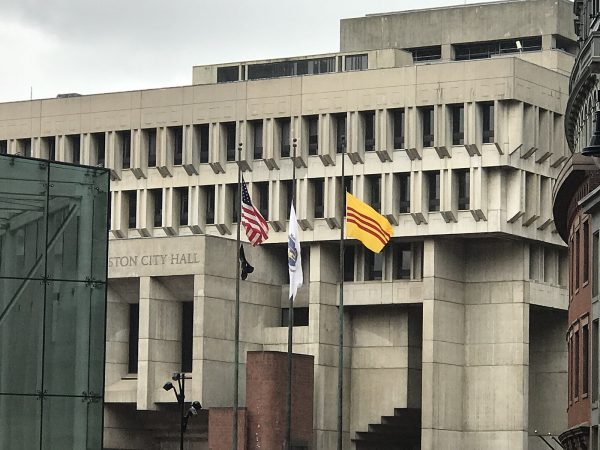
Municipalities all over the world actually fly the South Vietnamese flag out of respect to local Vietnamese communities and it has been reclassified as the “Freedom and Heritage Flag” in a number of cities across the country. If you spend enough time in a Vietnamese enclave, you might end up thinking that this was the official flag of Vietnam. Meanwhile, a lot of refugees see the official flag of Vietnam as a reminder of what they’d fled. So as Vietnamese Americans became more politically active in the ’90s and early 2000s, essentially anywhere the official flag appeared, a protest would follow it.
Still, the South Vietnamese flag is not without its controversial associations. If the official, five-pointed star flag of Vietnam is viewed as the communist flag, then the yellow flag with red stripes of South Vietnam is seen by some as the “anti-communist” flag. And in America, where the left is often painted by the right as being “communist,” the South Vietnamese flag began drifting towards becoming a politically conservative symbol. For some, the yellow flag with red stripes has become a shorthand for right-wing nationalism. It had been a constant presence at Trump rallies leading up to January 6th.
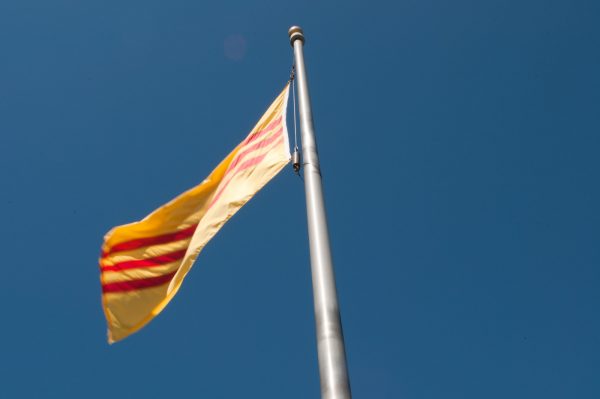
There’s something of a generational divide in the Vietnamese American community when it comes to politics. There’s even a support group on Facebook for Asian Americans with Republican parents that’s filled with second-generation Vietnamese kids. Like a lot of conservative America, Republican Vietnamese have been drawn to Trumpism. The South Vietnamese flag’s presence that day brought up a lot of questions for those who don’t want to see it co-opted by one political ideology. Many fans of the flag want it to retain more nuanced associations and providing a starting point for conversations about the shared (yet also diverse) culture and experience of the Vietnamese diaspora.



Comments (6)
Share
This reminds me of when the L’Manberg flag was sighted at a right wing rally in the UK. L’Manberg is a fake country from the Minecraft Dream SMP lore.
Great episode! I had never gotten a good explanation on why those South Vietnamese flags were at right wing rallies, and being Vietnamese now Canadian, that was meaningful to know. As for the meaning of the flag, it had been described to me as the yellow standing for the skin tone of the people (as a primary colour rather than tone of it), and the three red stripes stood for the blood lines of the three cultures of people in VIet Nam. And wonderful to learn Vivian Le is Vietnamese (never checked name spelling). We take a lot of pride and joy in seeing our fellow Vietnamese succeed. Thank you for the episode! I will share with many I know, including VIetnamese and vexillological friends. :)
Vivian, thank you so much for this story. My wife is Vietnamese, a little older than your mother and she didn’t escape until 1981. I’ve seen the South Vietnamese flag at the “little Saigon” in metro DC (actually in Virginia) and wondered how long it will continue to be flown as it seems to be hanging onto a past that has been gone 46 years now.
Having said that, I met a high school student in 1988 who was studying Ukrainian language at school in Sydney and at the time I thought it was ridiculous since Ukraine had been part of the Soviet Union for about 70 years at that point and it seemed pointless as I believe the language was banned there and the student was growing up in Australia. And yet, just 3 years later, the Soviet Union collapsed and Ukraine won it independence and the Ukrainian became the official language. The Vietnamese communist party has a tight grip on power and it would be folly to expect it to fall in the foreseeable future but it is also not impossible.
Yes to the anti-Chinese sentiment among older Vietnamese – especially those older than my wife – and by extension, the pro-Trump attitudes, something that horrifies my wife. She says that Trump and other Republicans who say that socialism/communism is coming to America have no clue what communism actually is.
Thank you for the explanation of the names of phở restaurants! I had wondered about that but never thought to ask. Also on how not to say it.
I have to wonder if the South Vietnam flag at the insurrection was being flown by US Vietnam veterans, because in my part of the country (Georgia) it’s much more common to see that flag (or more accurately, the sideways Army service ribbon/medal version of it) as a bumper sticker, t shirt, or hat. It would make more sense to me if that were the case at the rally, but Vivian’s description of the expatriate South Vietnamese feelings towards the flag make sense, too. I guess it depends on who brought the flag to the rally.
Dear Vivian, thanks for this episode (along with all the others you were involved) as it’s second part about restaurant namens made me think about the situation here in Germany. I couldn’t remember a pattern, so I looked up vietnamese restaurants in Frankfurt am Main. Of the first 50 that Google Maps found, less then 10 percent have Pho in their names and none (!) has a number. The only recurring part seems to be Viet, Vietnam or Vietnamesisch (the german adjective form of Vietnam). It quite funny how different this is in compared to the US.
Same here in Melbourne, Australia – we have three Vietnamese neighbourhoods: Abbotsford, Springvale and Footscray, each with a dozen or more pho places, and almost none have a number in the name.
Maybe it is a US Vietnamese naming convention.